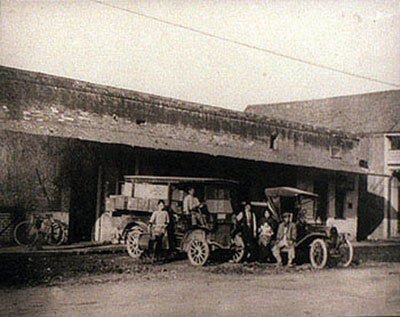My friend Jeanne Katsuro calls the Spirit of Japantown
festival
”
a miracle.
”
She believes the community celebration next weekend proves
people of all ethnicities can work together to create
”
a beautiful and heartfelt story.
”
My friend Jeanne Katsuro calls the Spirit of Japantown festival “a miracle.” She believes the community celebration next weekend proves people of all ethnicities can work together to create “a beautiful and heartfelt story.”
As co-founder of this first-time event – a multi-cultural bash that will be held Oct. 6 – she’s inviting all South Valley residents to help celebrate the history and heritage of San Jose’s colorful Japantown neighborhood. Besides San Jose, only San Francisco and Los Angeles can boast of major urban districts in America focusing on the Japanese culture.
“Four years ago when we found out that there were only three Japantowns left in the United States, our hearts sank,” Katsuro said. “We decided we needed to bring attention to our San Jose Japantown by creating this community festival for the promotion and preservation of Japantown.”
In the community spirit of the festival, several South Valley residents have volunteered to help, including Gilroy’s Lawson Sakai, who served as a member of the all Japanese-American 442nd Regimental Combat Team during World War II. He will showcase a traveling exhibit describing how Japanese-Americans aided the U.S. military in Japan and Europe during that war.
San Jose’s Japantown also has a historic connection to the South Valley that goes back 117 years. For many decades, it served as a regional cultural center for the Japanese immigrants who lived and worked on Bay Area farms including in San Benito County and around Morgan Hill and Gilroy.
Japantown got its start in the last years of the 19th century when thousands of Japanese men voyaged to California to work in fields and orchards. These immigrants – mostly single men – originally came with the intention of working a few years and then returning to Japan with enough money to start their own families. They faced racism, xenophobia and exploitation from many California residents who saw their foreign lifestyle as a threat to American culture.
Many of the men who worked the fields of Santa Clara County created a community next to San Jose’s Heinlenville Chinatown north of the downtown district. They called their settlement “Nihonmachi” – Japantown. These men faced a harsh and lonely life, missing the culture and foods of their Asian homeland. Banding together helped them to better deal with the harsh discrimination they daily faced.
In 1907, Teddy Roosevelt made a “Gentlemen’s Agreement” with the Emperor of Japan that allowed many of these men to bring wives over from Japan to California. The couples started raising their young ones in a mixture of Japanese and American cultures. San Jose’s Japantown changed from a community of bachelors to one of families.
The Japanese-Americans of Nihonmachi faced their ups and downs over the next several decades. In 1921, racist attitudes among many Americans pushed the U.S. government to ban female immigration from Japan. In California, marriage between Caucasians and Asians was outlawed. Many single Japanese men in Japantown and across the state thus faced difficulty finding female companionship.
After the bombing of Pearl Harbor, the internment of more than 120,000 Japanese-Americans into “relocation camps” caused all most all of Japantown’s 53 businesses to close for the duration of the war. By 1947, 100 families and 40 businesses had returned to the community.
Today, Japantown is a quaint district that proudly displays its colorful heritage and history. You’ll find a number of excellent restaurants, gift shops and speciality stores reflecting Japanese influences as well as Chinese, Hawaiian, Mexican, Cuban and Korean cultures. A farmers’ market held every Sunday brings in folks who want to buy fresh produce. And the district is currently rebuilding its Japanese-American Museum which will provide a unique Asian perspective of Santa Clara County’s history.
Katsuro feels proud of Japantown. That pride drove her, along with her friend Kathy Sakamoto, to create the Spirit of Japantown festival.
“It’s like a small town in the middle of this huge city,” she said. “We walk down the street and we all know each other here. There’s just a real homey small town feel to it.”
Japantown started off as a community where lonely Japanese male farm-workers could feel safe from discrimination. Today, its upcoming festival reflects a diversity of cultures coming together to celebrate a charming neighborhood. This beautiful and heartfelt story, as my friend Katsuro proclaimed, truly is a miracle.
For more details, go to www.spiritofjapantownfestival.com or call (408) 569-1415.














